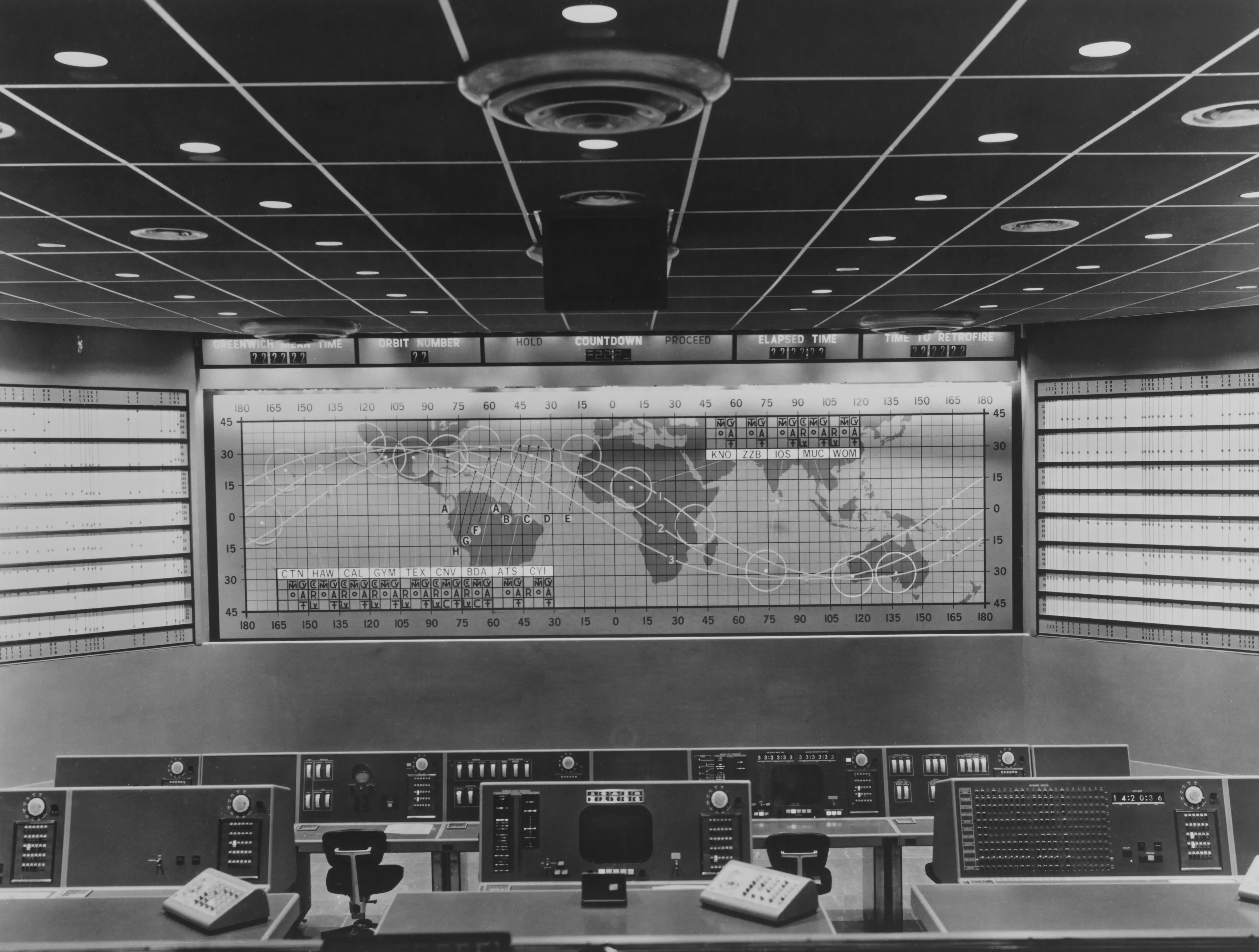Who is overseeing the International Space Station while NASA remains shut down? Explained
-
 Interior view showing the control display system for Project Mercury, with an 8ft-by 26ft world map displaying the capsule's path in orbit and the locations of the remote tracking stations, in the Mercury Control Center (MCC) at the Cape Canaveral Space Force Station (CCSFS) on Cape Canaveral in Brevard County, Florida, 14th April 1961. Also known as Building 1385, the 50ft by 60ft operations room provided control and coordination of all activities associated with the NASA's Project Mercury flight operation as well as the first three Project Gemini flights. (Photo by Space Frontiers/Archive Photos/Getty Images)
Interior view showing the control display system for Project Mercury, with an 8ft-by 26ft world map displaying the capsule's path in orbit and the locations of the remote tracking stations, in the Mercury Control Center (MCC) at the Cape Canaveral Space Force Station (CCSFS) on Cape Canaveral in Brevard County, Florida, 14th April 1961. Also known as Building 1385, the 50ft by 60ft operations room provided control and coordination of all activities associated with the NASA's Project Mercury flight operation as well as the first three Project Gemini flights. (Photo by Space Frontiers/Archive Photos/Getty Images)As NASA faces a temporary shutdown due to budget delays, questions have surfaced about the management and safety of the International Space Station (ISS) and its crew. Despite NASA’s limited operations, officials confirm that the ISS continues to function normally, thanks to international partnerships and pre-established contingency protocols designed for such situations.
How the shutdown affects NASA operations
During a shutdown of NASA, the majority of its civil work, administrative offices, and research programs are put on hold. Only activities vital for human safety and essential missions may continue. These include keeping the ISS in contact and the astronaut's welfare.
As some portion of NASA's employees are put on furlough in the period of the shutdown, there is another group of critical personnel that works day and night.
They are in charge of the monitoring of life-support systems, communication systems, power generation, and orbital controls.
This work of theirs safeguards astronauts on the ISS from the administrative interruptions in the world.
The role of international partners
The ISS is a global project jointly managed by several space agencies, including NASA (United States), Roscosmos (Russia), ESA (Europe), JAXA (Japan), and CSA (Canada). During a U.S. government shutdown, these international partners play an even more critical role.
Russia’s Roscosmos handles part of the station’s navigation, propulsion, and cargo transport operations. ESA and JAXA also provide essential support by maintaining communication links, delivering supplies, and assisting with daily mission planning.
This collaborative structure ensures that the ISS remains stable and secure, even when one agency temporarily scales back.
Crew operations remain unaffected
Currently, the astronauts aboard the ISS are continuing their daily routines that includes maintenance checks, scientific experiments, and physical training.
According to NASA’s pre-shutdown planning documents, astronauts are considered part of “excepted” operations—meaning their missions did not stop or get delayed by any funding gaps.
The Houston and Moscow Mission Control Centers continue to function, keeping all onboard systems running smoothly.
NASA's critical personnel continues to talk to the crew, providing advice and information as necessary.
Contingency planning and automated systems
Today's systems on board the ISS make possible many automated or remotely operated activities.
Automated maintenance of life-support, temperature control, and electrical power distribution eliminates the need for continuous manual operation.
NASA and its collaborators have long anticipated temporary loss of communication or administrative hold-ups so safety is ensured under all circumstances.
Experts also state that the ISS is designed in a such way that it can withstand temporary disruptions to ground activities.
All partner agencies have their own backup systems and communication channels to provide backup to the crew in case a particular agency experiences a disruption in activities.
While the NASA shutdown raises concerns among the public, officials stress that international collaboration keeps the ISS running smoothly.
This alternative arrangement really does showcase that the importance of global partnerships in space exploration, where shared responsibility ensures the success and safety of ongoing missions.
As discussions continue in Washington regarding NASA’s funding and reopening, operations aboard the ISS remain steady.
The astronauts continue their work 400 kilometers above Earth, supported by teams worldwide who ensure that science and safety persist despite temporary obstacles on the ground.
TOPICS: NASA
- NASA’s MAVEN spacecraft detects signs of hydrogen coming from comet 3I/Atlas as scientists study the interstellar visitor closely
- NASA explains why the new HiRISE image of interstellar comet 3I/Atlas looks fuzzy while amateur astronomers capture clearer views
- Avi Loeb questions NASA’s 3I/Atlas press conference as he says “obvious facts” may be hiding bigger truth
- ISRO captures rare and close-up image of fast-moving interstellar comet 3I/Atlas as scientists continue tracking its path